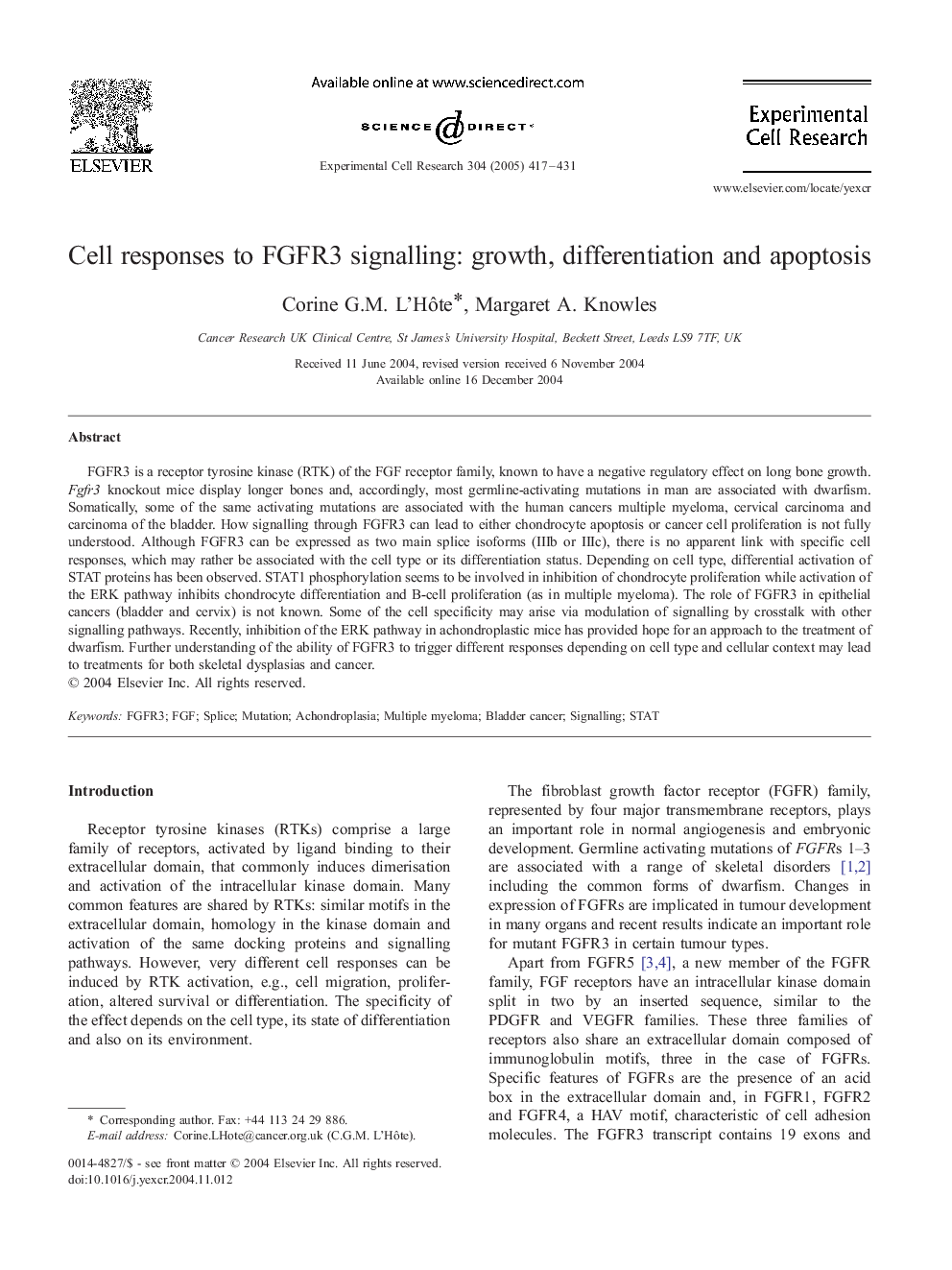| کد مقاله | کد نشریه | سال انتشار | مقاله انگلیسی | نسخه تمام متن |
|---|---|---|---|---|
| 10905027 | 1086718 | 2005 | 15 صفحه PDF | دانلود رایگان |
عنوان انگلیسی مقاله ISI
Cell responses to FGFR3 signalling: growth, differentiation and apoptosis
دانلود مقاله + سفارش ترجمه
دانلود مقاله ISI انگلیسی
رایگان برای ایرانیان
کلمات کلیدی
موضوعات مرتبط
علوم زیستی و بیوفناوری
بیوشیمی، ژنتیک و زیست شناسی مولکولی
تحقیقات سرطان
پیش نمایش صفحه اول مقاله

چکیده انگلیسی
FGFR3 is a receptor tyrosine kinase (RTK) of the FGF receptor family, known to have a negative regulatory effect on long bone growth. Fgfr3 knockout mice display longer bones and, accordingly, most germline-activating mutations in man are associated with dwarfism. Somatically, some of the same activating mutations are associated with the human cancers multiple myeloma, cervical carcinoma and carcinoma of the bladder. How signalling through FGFR3 can lead to either chondrocyte apoptosis or cancer cell proliferation is not fully understood. Although FGFR3 can be expressed as two main splice isoforms (IIIb or IIIc), there is no apparent link with specific cell responses, which may rather be associated with the cell type or its differentiation status. Depending on cell type, differential activation of STAT proteins has been observed. STAT1 phosphorylation seems to be involved in inhibition of chondrocyte proliferation while activation of the ERK pathway inhibits chondrocyte differentiation and B-cell proliferation (as in multiple myeloma). The role of FGFR3 in epithelial cancers (bladder and cervix) is not known. Some of the cell specificity may arise via modulation of signalling by crosstalk with other signalling pathways. Recently, inhibition of the ERK pathway in achondroplastic mice has provided hope for an approach to the treatment of dwarfism. Further understanding of the ability of FGFR3 to trigger different responses depending on cell type and cellular context may lead to treatments for both skeletal dysplasias and cancer.
ناشر
Database: Elsevier - ScienceDirect (ساینس دایرکت)
Journal: Experimental Cell Research - Volume 304, Issue 2, 1 April 2005, Pages 417-431
Journal: Experimental Cell Research - Volume 304, Issue 2, 1 April 2005, Pages 417-431
نویسندگان
Corine G.M. L'Hôte, Margaret A. Knowles,